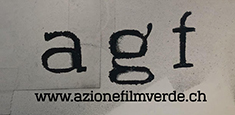Collections
Cinémathèque suisse
A journey of discovery of films shot in Southern Switzerland that will take you to get to know Eve, the first "femme fatale" of Ticino cinema, or a thousand faces of Gotthard, from the old postilion of yesteryear to the excavations for the St. Gotthard motorway tunnel, acting as a gateway and frontier between North and South. All of this goes from mountain landscapes with Fulvio Bernasconi's Dam to Lugano's banks with The Consequences of Love by a Sorrentino before his international fame.
Ticino,
cinema beneath the skin
A collection curated by the Cinémathèque suisse and presented by its director Frédéric Maire.
Ticino and the cinema have long coexisted in a set of contradictions. On the one hand, Ticino has been home since 1946 to Locarno, one of the most important international film festivals, which attracts the world's greatest artists every year. There are also numerous foreign or Swiss-German films shot in Ticino: the Swiss region south of the Alps is a place where a sort of miniature model of Italy with all the advantages of Switzerland can be found. I am thinking for example of the French 13 grand rue by Jean Brocher (1934) - shot in Morcote -, Le voyage imprévu by Jean de Limur (1935) or during the war Une femme disparaît by Jacques Feyder (1942), or Maturareise by Sigfrit Steiner and Jacques Feyder (1942), but also, additionally, the famous James Bond filmed on the Contra dam in Verzasca in Goldeneye (1995). It is clear that foreign filmmakers love the beauty of the landscapes, the variety of mountains and lakes, the mild climate... In short, theirs is a tourist's viewpoint that supports the idea of the "Sonnenstube", as in August Kern's rather lighthearted Cuckoo's Song (1942).
And yet, this Ticino is also a land of welcome for foreign artists who have felt at home and decided to live here. In addition to numerous writers (from Hermann Hesse to Patricia Highsmith), we should also remember the great American film director of German origin, Douglas Sirk, who settled in Castagnola at the beginning of the 1960s. It is therefore no coincidence that in this land of contrasts between countryside and lake, mountain and city, many famous artists were born, from Borromini to Botta, and thus also from the cinema.
Many of Ticino's film talents - directors, technicians, actors - have often left, some for German or French-speaking Switzerland, others to go abroad. Some left to continue their brilliant careers, for example the director Fulvio Bernasconi, the directors of photography Renato Berta and Carlo Varini, the make-up artist Esmé Sciaroni, the set designer Sonia Peng or actors Hannes Schmidhauser and Teco Celio.
The destiny of Locarno director Franco (or Francis) Borghi, director of the first officially Ticinese feature film, Eve (1939), is exemplary. After his "training" period in Paris, Borghi hoped for the creation of a Ticino film industry, "since the projects presented in those years by foreigners had not been followed up". He created the production company Locarno Films and, together with his friend Virgilio Gilardoni, envisaged many projects. With the exception of Eve, none of these were made. But if there were no films, there was interest in cinema, in particular on the part of the cinema exhibitor André Mondini: actor in the film Eve, he was one of the founders of the Film Festival with Raimondo Rezzonico, Riccardo Bolla, Camillo Beretta and Giuseppe Padlina.
Fortunately, this is not always the case. A director and producer such as Villi Hermann from Ticino is committed to making a cinema deeply linked to his region, both in fiction and documentary; other producers, such as Ventura Films, Amka Films, Pic Film or Cinédokké, demonstrate a great vitality of creation in this small territory, allowing numerous directors from Ticino to make their voices heard today: the contemporary films in our collection are but a sample of what Ticino directors have to offer today.
Over the years, a series of structures have been developed and now make it possible to shoot and post-produce the sound and image on location. It is also worth noting the very active role of the Swiss-Italian television, RSI, which co-produces many films and also offers work opportunities to filmmakers.
In short: this small land in the middle of Europe has given so much to cinema. As you can see from the films I've chosen for the collection we're proposing.
Frédéric Maire, Director Cinémathèque suisse





